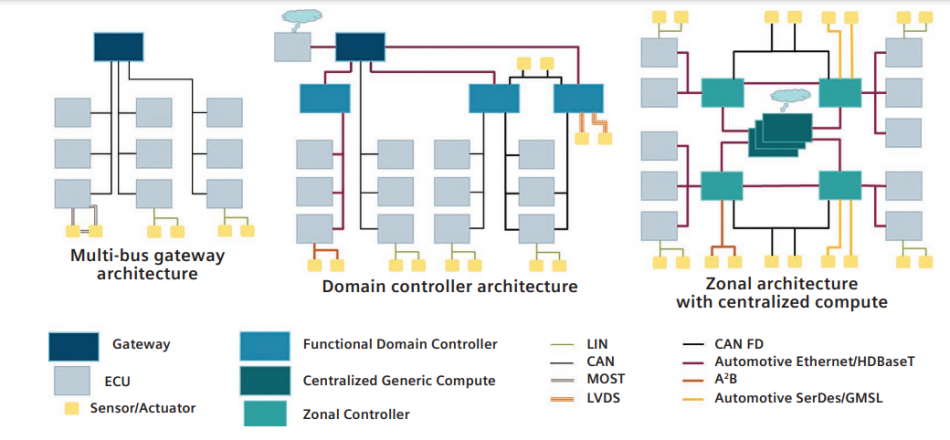Balancing the requirements of E/E architectures for automotive design
Developing the electrical and electronic (E/E) architectures at the heart of today’s road vehicles is becoming more complex. Much of the challenge lies in breaking down a series of interconnected elements. A White Paper from Siemens EDA looks at how to decompose these and then chart the architectural path to an integrated design using tools that provide early verification checks and enable speedy and accurate project delivery.
Complexity is growing as the type of architecture itself evolves alongside functionality. In this light, Real-world considerations for vehicle E/E architecture design considers each of a group of requirements that OEMs must consider with regard to implementing the right wiring with the right components. These are:
- Topology
- Functional safety
- Cyber security
- Power modes
- Processor, network and gateway loadings
- I/O connectivity (ECU/sensor/actuator)
- Hardware and software re-use
The most important individual targets and metrics within each of these is described, alongside the role of design tools in allowing appropriate and timely architectural exploration, accurate simulation, and benchmarking against rules and best practices.

Figure 1. E/E architectures are evolving. Multi-bus gateway architectures approaches are giving way to domain controller architectures and eventually the market will move to zonal architectures with centralized computing (Siemens – click to enlarge)
“There are many considerations that E/E system architects must include when developing, updating and optimizing vehicle architectures. These can typically be characterized as attributes or properties of the function, ECU, signal, port and so on,” argues author Brendan Morris.
“Therefore, it becomes absolutely necessary to use advanced tools such as Capital Systems Architect from Siemens Digital Industries Software to both plan and check the architecture against a set of rules and guidelines defined by the engineers. Furthermore, with extensible rules, it is desirable to automate assignments and allocations, according to the rules defined.”


